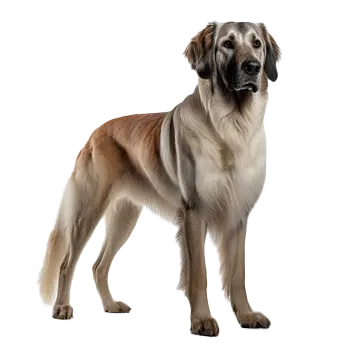The Aidi is generally regarded as one of the healthiest dog breeds, benefiting from centuries of natural selection based on working ability and survival in challenging environments rather than appearance-based breeding. This natural development created a robust breed with strong genetic diversity and relatively few inherited health problems. The typical lifespan of 10 to 12 years is reasonable for a medium-sized working breed, though individual longevity depends on genetics, care, and environmental factors.
Despite the breed's overall hardiness, hip dysplasia represents the primary orthopedic concern in Aidis. This developmental condition occurs when the hip joint forms improperly, leading to joint instability, cartilage damage, and eventually arthritis. Hip dysplasia ranges from mild cases causing minimal discomfort to severe cases significantly impacting mobility and quality of life. The condition has both genetic and environmental components, with rapid growth, excessive exercise in young dogs, and obesity potentially contributing to development or worsening of symptoms.
Responsible breeders perform hip evaluations on breeding dogs through radiographic screening programs like the Orthopedic Foundation for Animals or PennHIP to identify dysplastic dogs and avoid breeding affected animals. Prospective owners should ask breeders for hip clearances on parent dogs. While hip evaluations don't guarantee offspring won't develop the condition, they significantly reduce risk by removing severely affected dogs from breeding programs.
Elbow dysplasia, though less common than hip dysplasia in Aidis, can also occur in the breed. This condition involves abnormal development of the elbow joint, causing pain, lameness, and arthritis. Like hip dysplasia, elbow problems have genetic components and can be screened through radiographic evaluation. Maintaining appropriate body weight and providing appropriate exercise helps minimize stress on joints whether or not dysplasia is present.
Patellar luxation, where the kneecap slips out of its normal position, occasionally affects Aidis though it's more common in smaller breeds. This condition can be congenital or develop from injury. Mild cases may cause occasional skipping or lameness, while severe cases require surgical correction. Regular veterinary examinations can detect patellar luxation, allowing for appropriate management based on severity.
The Aidi's thick coat and mountain heritage mean they tolerate cold weather exceptionally well but can struggle in hot, humid climates. Heat sensitivity isn't a health condition per se but represents an important management consideration. During warm weather, exercise should be scheduled for cooler parts of the day, access to shade and water must be continuous, and signs of overheating monitored carefully. The dense undercoat insulates against both cold and heat to some degree, but extreme temperatures require special attention.
Dental disease affects many dog breeds including Aidis, particularly as they age. Tartar accumulation leads to gingivitis, periodontitis, and eventual tooth loss if untreated. More seriously, bacteria from dental disease can enter the bloodstream and affect organs including the heart and kidneys. Regular dental care including tooth brushing, dental chews, and professional cleanings as recommended by veterinarians helps prevent or minimize dental problems and their systemic consequences.
Glaucoma, increased pressure within the eye that damages the optic nerve and can lead to blindness, occasionally occurs in aging Aidis. Regular veterinary examinations including eye evaluation can detect glaucoma early when treatment is most effective. While not extremely common in the breed, awareness of the condition helps ensure prompt veterinary attention if symptoms like redness, squinting, or vision changes appear.
Regular veterinary care is essential for maintaining Aidi health throughout the lifespan. Annual wellness examinations for young to middle-aged adults allow veterinarians to detect subtle changes and address problems early. Senior Aidis benefit from more frequent check-ups, typically every six months, along with screening blood work to monitor organ function. Vaccinations should be maintained according to veterinarian recommendations and lifestyle risk factors. Parasite prevention including heartworm, flea, tick, and intestinal parasite control protects against diseases and discomfort. Weight management throughout life reduces stress on joints, maintains cardiovascular health, and supports overall longevity. Providing appropriate nutrition, regular exercise, mental stimulation, and preventive care gives Aidis the best opportunity for long, healthy lives.
Common Health Issues
- Despite the breed's overall hardiness, hip dysplasia represents the primary orthopedic concern in Aidis.
- Hip dysplasia ranges from mild cases causing minimal discomfort to severe cases significantly impacting mobility and quality of life.
- Elbow dysplasia, though less common than hip dysplasia in Aidis, can also occur in the breed.
- Like hip dysplasia, elbow problems have genetic components and can be screened through radiographic evaluation.
- Patellar luxation, where the kneecap slips out of its normal position, occasionally affects Aidis though it's more common in smaller breeds.
- Regular veterinary examinations can detect patellar luxation, allowing for appropriate management based on severity.
Preventive Care & Health Monitoring
- The condition has both genetic and environmental components, with rapid growth, excessive exercise in young dogs, and obesity potentially contributing to development or worsening of symptoms.
- Responsible breeders perform hip evaluations on breeding dogs through radiographic screening programs like the Orthopedic Foundation for Animals or PennHIP to identify dysplastic dogs and avoid breeding affected animals.
- Maintaining appropriate body weight and providing appropriate exercise helps minimize stress on joints whether or not dysplasia is present.
- Regular veterinary examinations can detect patellar luxation, allowing for appropriate management based on severity.
Regular veterinary check-ups and preventive care are essential for maintaining your Aidi's health and longevity.

